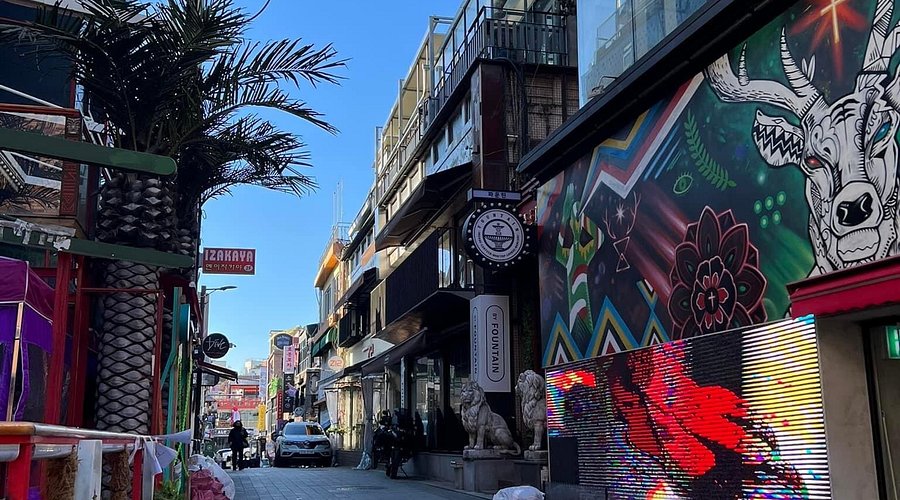Exploring Itaewon: Seoul’s Vibrant Cultural Melting Pot
Located at the heart of Seoul, Itaewon has long stood as a unique neighborhood renowned for its dynamic blend of cultures, cuisines, and lifestyles. This district is much more than a mere tourist spot; it is a microcosm of global influences harmoniously coexisting within vibrant city streets. From its beginnings as a post-war hub for international communities to its modern status as a trendy enclave for locals and foreigners alike, Itaewon has continually evolved. This article will delve into the history, cultural diversity, culinary scene, nightlife, and contemporary challenges that shape the character of Itaewon today, providing a comprehensive insight into what makes this neighborhood a fascinating area within the sprawling metropolis of Seoul.
The Historical Roots of Itaewon
Itaewon’s origins are deeply intertwined with Korea’s modern history. After the Korean War, Itaewon emerged as a residential and commercial area primarily serving U.S. military personnel stationed in Seoul. This unique connection introduced varied cultural elements, such as Western cuisines and entertainment venues, laying the foundation for the neighborhood’s diverse character. Over time, as Seoul rapidly modernized, Itaewon attracted both foreign expatriates and Koreans seeking a cosmopolitan atmosphere. The influx of diverse populations created a melting pot where cultures mingled freely, setting Itaewon apart from other Seoul districts traditionally rooted in homogeneity.
Cultural Diversity and Global Influence
What makes Itaewon exceptionally distinctive is its extraordinary cultural diversity. Unlike many neighborhoods in Seoul, Itaewon is home to a large number of international residents, including people from Southeast Asia, the Middle East, Africa, and Western countries. This diversity manifests in the streets, where international shops, mosques, foreign language bookstores, and ethnic restaurants coexist. For example, Itaewon hosts one of Korea’s largest Muslim communities, supported by the Seoul Central Mosque, which serves as both a religious and cultural landmark. This multicultural environment encourages cultural exchange and understanding, making Itaewon a vibrant hub for global interaction within the city.
The Culinary Landscape: A Taste of the World
One of Itaewon’s most celebrated features is its rich and varied food scene, which reflects the neighborhood’s international makeup. Here, visitors can sample authentic dishes from numerous countries without leaving Seoul. Korean barbecue joints stand alongside Middle Eastern kebab shops, Indian curry houses, and European bakeries, creating a culinary mosaic that appeals to all palates. This gastronomic diversity is not just about food but represents a broader acceptance and celebration of cultural identities. Food festivals and international markets frequently take place in Itaewon, further reinforcing its role as a dynamic platform for cultural fusion through cuisine.
Nightlife and Entertainment
Itaewon’s nightlife is legendary, attracting a diverse crowd from locals to tourists seeking lively entertainment after dark. The neighborhood boasts an eclectic mix of bars, clubs, live music venues, and casual pubs that cater to various tastes and styles. Its inclusive atmosphere welcomes people of all backgrounds, creating an open and celebratory environment. From sophisticated rooftop bars offering panoramic city views to underground clubs where cutting-edge music pulses, Itaewon remains a hotspot for nocturnal activity. This vibrant nightlife scene also promotes social mingling, encouraging the continuation of cultural exchanges and friendships formed during the day.
Modern Challenges and the Future of Itaewon
Despite its vibrancy, Itaewon faces contemporary challenges related to urban development, gentrification, and the balance between preserving its unique culture and accommodating modernization. Recent redevelopment projects threaten to alter the neighborhood’s character by replacing smaller, culturally significant businesses with upscale developments. Moreover, efforts to enhance public safety and infrastructure sometimes clash with the organic, informal vibe that made Itaewon attractive in the first place. However, both local stakeholders and residents actively engage in dialogues seeking sustainable solutions to maintain Itaewon’s identity while embracing growth, ensuring the neighborhood’s rich cultural tapestry continues to thrive for future generations.
Conclusion: Itaewon as a Reflection of Global Seoul
In summary, Itaewon stands as a remarkable symbol of Seoul’s increasing globalization and cultural openness. Its rich history, marked by international influences, has blossomed into a diverse communal space where culture, food, and entertainment intersect. The neighborhood’s ability to celebrate diversity while adapting to the waves of modernization highlights its unique place within Seoul. Despite facing challenges posed by urban development and cultural preservation, Itaewon’s enduring spirit as a welcoming, lively, and multicultural district ensures its continued appeal. For anyone seeking a truly cosmopolitan experience in Korea, Itaewon offers an unparalleled glimpse into the fusion of tradition and contemporary global culture.
